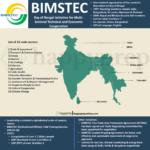Industrial Disputes Act, 1947

In this article, we have covered the Industrial Disputes Act, 1947 in detail. The Act has been broken down in a very simple way to understand the basic structure of the Act. We believe that this is possibly the only article on internet to cover Industrial Disputes Act, 1947 in such a lucid way. So be patient as it will be a lengthy article and scroll down to all the sections. But trust me, all the fear related to the Act will disappear once you start learning the things correct way.
History of Industrial Disputes Act, 1947
During British rule in India, industrialization and urbanization were on the rise, leading to significant labour unrest and disputes between employers and workers. The British government implemented some legislation to manage these issues, but these efforts were limited in scope and often favored employers. The Trade Disputes Act of 1929 was among the initial attempts to address industrial disputes. However, this act largely restricted the rights of workers and unions, limiting the right to strike and instituting penalties for “unlawful” strikes. The early 20th century saw increased labour unrest and unionization in response to poor working conditions, low wages, and limited worker rights. The labour movement in India grew in strength, with significant events such as the Bombay Textile Strike of 1928 and the Railway Strikes in the 1930s, highlighting the need for better dispute resolution mechanisms.
With India’s independence in 1947, there was a need to create a more comprehensive legal framework to address industrial disputes and promote harmonious industrial relations and thus, The Industrial Disputes Act of 1947 was enacted to fill this gap.
Objective of Industrial Disputes Act, 1947
The Industrial Disputes Act of 1947 aimed to provide mechanisms for resolving industrial disputes through conciliation, arbitration, and adjudication. It also outlined processes for strikes, lockouts, layoffs, and retrenchments, with the goal of reducing industrial unrest and ensuring a fair approach to resolving disputes.
Since its enactment, the Industrial Disputes Act of 1947 has been amended several times to address changing industrial dynamics and improve dispute resolution processes. It has played a crucial role in promoting industrial peace and stability in India, providing a legal framework for resolving disputes while protecting workers’ rights.
Arrangement of Section
CHAPTER I: Definitions
Section 2 (k) “industrial dispute” means any dispute or difference between employers and employers, or between employers and workmen, or between workmen and workmen, which is connected with the employment.
CHAPTER II: Authorities under the Act
Works Committee(Section-3)
Condition
one hundred or more workmen are employed or have been employed on any day in the preceding twelve months |
Constituted by
Appropriate Government |
Composition
– representatives of employers and workmen – representatives of workmen >= the number of representatives of the employer |
Duties
to promote measures for securing and preserving amity and good relations between the employer and workmen |
Conciliation officers(Section-4)
Constituted by
Appropriate Government |
Composition
such number of persons as it thinks fit |
Duties
-Mediate and promote the settlement of industrial disputes. – investigate the dispute and all matters affecting the merits to come to a fair and amicable settlement of the dispute -shall keep the appropriate government informed about the development (Settled/not settled) – A report shall be submitted within fourteen days of the commencement of the conciliation proceedings |
Powers
-after giving reasonable notice, enter the premises occupied by any establishment to which the dispute relates
-may enforce the attendance of any person
-inspect any document
Board of Conciliation(Section-5)
Constituted by
Appropriate Government |
Composition
a chairman and two or four other members, as the appropriate Government thinks fit. |
Duties
-promote the settlement of an industrial dispute – investigate the dispute and all matters affecting the merits to come to a fair and amicable settlement of the dispute -shall keep the appropriate government informed about the development (Settled/not settled) – A report shall be submitted within 2 months of the date the dispute was referred. |
Powers
after giving reasonable notice, enter the premises occupied by any establishment to which the dispute relates enforcing the attendance of any person and examining him on oath; (b) compelling the production of documents and material objects; (c) issuing commissions for the examination of witnesses |
Courts of Inquiry(Section-6)
Constituted by
Appropriate Government |
Composition
-one independent person or of such number of independent persons -if two or more members, one of them shall be appointed as the chairman |
Duties
-inquire into any matter appearing to be connected with or relevant to an industrial dispute. -report to the appropriate Government ordinarily within a period of six months from the commencement of its inquiry |
Powers
-after giving reasonable notice, enter the premises occupied by any establishment to which the dispute relates enforcing the attendance of any person and examining him on oath; (b) compelling the production of documents and material objects; (c) issuing commissions for the examination of witnesses |
Labour Courts(Section-7)
Constituted by
Appropriate Government |
Composition
A Labour Court shall consist of one person only |
Duties
adjudication of industrial disputes relating to any matter specified in the Second Schedule |
Powers
after giving reasonable notice, enter the premises occupied by any establishment to which the dispute relates enforcing the attendance of any person and examining him on oath; (b) compelling the production of documents and material objects; (c) issuing commissions for the examination of witnesses |
Tribunals(Section 7A)
Constituted by
Appropriate Government |
Composition
-A Tribunal shall consist of one person only -The appropriate Government may, if it so thinks fit, appoint two persons as assessors to advise the Tribunal |
Duties
adjudication of industrial disputes relating to any matter |
Powers
after giving reasonable notice, enter the premises occupied by any establishment to which the dispute relates enforcing the attendance of any person and examining him on oath; (b) compelling the production of documents and material objects; (c) issuing commissions for the examination of witnesses |
National Tribunals(Section 7B)
Constituted by
The Central Government |
Composition
-A National Tribunal shall consist of one person only if he is, or has been, a Judge of a High Court -The Central Government may, if it so thinks fit, appoint two persons as assessors to advise the National Tribunal |
Duties
adjudication of industrial disputes which, in the opinion of the Central Government, involve questions of national importance or are of such a nature that industrial establishments situated in more than one State are likely to be interested in, or affected |
Powers
after giving reasonable notice, enter the premises occupied by any establishment to which the dispute relates enforcing the attendance of any person and examining him on oath; (b) compelling the production of documents and material objects; (c) issuing commissions for the examination of witnesses |
CHAPTER-IIB
- Every industrial establishment employing twenty or more workmen shall have one or more Grievance Redressal Committee for the resolution of disputes
- The Grievance Redressal Committee shall consist of equal number of members from the employer and the workmen
- The chairperson of the Grievance Redressal Committee shall be selected from the employer and from among the workmen alternatively on rotation basis every year.
- The total number of members of the Grievance Redressal Committee shall not exceed more than six( 1 women if total members are 2 but if more than 2 members then the number of women may be increased proportionately)
- complete its proceedings within thirty days on receipt of a written application
- appeal to the employer against the decision of Grievance Redressal Committee and the employer shall, within one month from the date of receipt of such appeal, dispose off the same
CHAPTER III: REFERENCE OF DISPUTES TO BOARDS, COURTS OR TRIBUNALS
- When the appropriate Government is of opinion that any industrial dispute exists, it may refer the dispute to the Board, Court of Inquiry, Labour court or to the tribunals in writing.
- The order shall specify the period within which such Labour Court, Tribunal or National Tribunal shall submit its award
- If industrial dispute is connected with an individual workman, period shall not exceed three months
CHAPTER IV: PROCEDURE, POWERS AND DUTIES OF AUTHORITIES
- The report of a Board or Court shall be in writing and shall be signed by all the members of the Board or Court
- The award of a Labour Court or Tribunal or National Tribunal shall be in writing and shall be signed by its presiding officer.
- Award should be published within a period of thirty days from the date of its receipt by the appropriate Government.
- An award (including an arbitration award) shall become enforceable on the expiry of thirty days from the date of its publication
- Persons on whom settlements and awards are binding: If conciliation, then all parties and if no conciliation, then the party who referred the dispute for arbitration.
- Conciliation proceeding considered to be started: letter of strike/lock down is received by the conciliation officer or date of order to refer the dispute to the Board.
- Conciliation proceeding considered to be concluded: settlement between the parties, Or in cased of no settlement, report of the conciliation officer is received by the appropriate Government or when the report of the Board is published
- The order shall specify the period within which such Labour Court, Tribunal or National Tribunal shall submit its award
- If industrial dispute is connected with an individual workman, period shall not exceed three months
CHAPTER V: STRIKES AND LOCK-OUTS
Strike
Section-2(q) “strike” means a cessation of work by a body of persons employed in any industry acting in combination or a concerned refusal, or a refusal under a common understanding, of any number of persons who are or have been so employed to continue to work or to accept employment;
Strike: No person shall go on strike in breach of contract—
(a) without giving to the employer notice of strike, as hereinafter provided, within six weeks before striking; or
(b) within fourteen days of giving such notice; or
(c) before the expiry of the date of strike specified in any such notice as aforesaid; or
(d) during the pendency of any conciliation proceedings before a conciliation officer and seven days after the conclusion of such proceeding
Lock-Out
Section-2(l) “lock-out” means the temporary closing of a place of employment, or the suspension of work, or the refusal by an employer to continue to employ any number of persons employed by him;
Lock-outs: No employer shall lock-out any of his workmen
(a) without giving them notice of lock-out as hereinafter provided, within six weeks before locking out; or
(b) within fourteen days of giving such notice; or
(c) before the expiry the date of lock-out specified in any such notice as aforesaid; or
(d) during the pendency of any conciliation proceedings before a conciliation officer and seven days after the conclusion of such proceedings.
Additional Conditions applicable on both:
(a) during the pendency of conciliation proceedings before a Board and seven days after the conclusion of such proceedings;
(b) during the pendency of proceedings before a Labour Court, Tribunal or National Tribunal and two months after the conclusion of such proceedings;
[(bb) during the pendency of arbitration proceedings before an arbitrator and two months after the conclusion of such proceedings, where a notification has been issued under sub-section (3A) of section 10A; or]
(c) during any period in which a settlement or award is in operation
NOTE:
A lock-out declared in consequence of an illegal strike or a strike declared in consequence of an illegal lock-out shall not be deemed to be illegal.
CHAPTER V-A: LAY-OFF AND RETRENCHMENT
Lay-Off
As per the Section-2(kkk) of the Industrial Disputes Act-1947, “lay-off” means the failure, refusal or inability of an employer on account of shortage of coal, power or raw materials or the accumulation of stocks or the break-down of machinery or natural calamity or for any other connected reason to give employment to a workman whose name is borne on the muster rolls of his industrial establishment and who has not been retrenched.
Concept of Continous Service:
- Continous service is the uninterrupted service including leaves, holidays, etc.
- Other than the condition of clause 1, following is considered for 1 year or six months service:
for a period of one year, if the workman has actually worked under the employer for not less than—
(i) one hundred and ninety days in the case of a workman employed below ground in a mine; and
(ii) two hundred and forty days, in any other case
for a period of Six months, if the workman has actually worked under the employer for not less than—
(i) ninety-five days, in the case of a workman employed below ground in a mine; and
(ii) one hundred and twenty days, in any other case
Compensation:
- Eligible: service>1 year. compensation which shall be equal to fifty per cent. of the total of the basic wages and dearness allowance
Not Eligible:
(i) if he refuses to accept any alternative employment in the same establishment from which he has been laid-off
(ii) if he does not present himself for work at the establishment at the appointed time during normal working hours at least once a day;
(iii) if such laying-off is due to a strike or slowing-down of production on the part of workmen in another part of the establishment.
Retrenchment
As per the section- 2(oo) of the Industrial Disputes Act-1947, “retrenchment” means the termination by the employer of the service of a workman for any reason whatsoever, otherwise than as a punishment inflicted by way of disciplinary action, but does not include—
(a) voluntary retirement of the workman or retirement of the workman on reaching the age of superannuation
(b) termination of the service of the workman as a result of the non-renewal of the contract of employment
(c) termination of the service of a workman on the ground of continued ill-health
Conditions:
The workman with more than 1 year of service cannot be retrenched until:
(a) the workman has been given one month‟s notice in writing indicating the reasons for retrenchment and the period of notice has expired, or the workman has been paid in lieu of such notice, wages for the period of the notice;
(b) the workman has been paid, at the time of retrenchment, compensation which shall be equivalent to fifteen days’ average pay for every completed year of continuous service or any part thereof in excess of six months; and
(c) notice in the prescribed manner is served on the appropriate Government
Additional Information
NOTE-1 For closure of the establishment, 60 day notice should be served on the appropriate Government stating clearly the reasons for the intended closure of the undertaking. Provided that nothing in this section shall apply to—
(a) an undertaking in which—
(i) less than fifty workmen are employed, or
(ii) less than fifty workmen were employed on an average per working day in the preceding twelve months,
(b) an undertaking set up for the construction of buildings, bridges, roads, canals, dams or for other construction work or project.
NOTE-2
- employer shall ordinarily retrench the workman who was the last person to be employed
Recovery of money due from an employer: application to be submitted within 1year to the appropriate government.
CHAPTER VI: PENALTIES
The list of penalties under various sections of the Industrial Disputes Act 1947 are as below:
Section 25Q | Penalty for lay-off and retrenchment without previous permission. | imprisonment for a term which may extend to one month, or with fine which may extend to one thousand rupees, or with both. |
Section 25R | Penalty for closure | imprisonment for a term which may extend to six months, or with fine which may extend to five thousand rupees, or with both |
Section 25U | Penalty for committing unfair labour practices | imprisonment for a term which may extend to six months or with fine which may extend to one thousand rupees or with both |
Section 26 | Illegal Strike | imprisonment for a term which may extend to one month, or with fine which may extend to fifty rupees, or with both |
| Illegal Lock out | imprisonment for a term which may extend to one month, or with fine which may extend to one thousand rupees, or with both |
Section 27 | Instigation | imprisonment for a term which may extend to six months, or with fine which may extend to one thousand rupees, or with both |
Section 28 | giving financial aid to illegal strikes and lock-outs | imprisonment for a term which may extend to six months, or with fine which may extend to one thousand rupees, or with both |
Section 29 | Penalty for breach of settlement or award. | shall be punishable with imprisonment for a term which may extend to six months, or with fine, or with both |
Want to read some more articles?
-
 Shanghai Cooperation Organization (SCO): Origin, Members, Facts, etc for UPSC and other exams
Shanghai Cooperation Organization (SCO): Origin, Members, Facts, etc for UPSC and other exams -
 BRICS: Origin, members and others for UPSC, PSC & other exams
BRICS: Origin, members and others for UPSC, PSC & other exams -
 BIMSTEC for UPSC: Origin, Members & More
BIMSTEC for UPSC: Origin, Members & More -
 General Science for Competitive exams: UPSC, PSC, APFC, EO-AO, SSC, etc
General Science for Competitive exams: UPSC, PSC, APFC, EO-AO, SSC, etc -
 THE TRADE UNIONS ACT, 1926 for UPSC EPFO APFC/EO-AO, ALC, and Other exams
THE TRADE UNIONS ACT, 1926 for UPSC EPFO APFC/EO-AO, ALC, and Other exams -
 Understanding Macroenvironment: Marketing Environment in Principles of Marketing
Understanding Macroenvironment: Marketing Environment in Principles of Marketing -
 Understanding Microenvironment: Marketing Environment in Principles of Marketing
Understanding Microenvironment: Marketing Environment in Principles of Marketing -
Interjections in English
-
Conjunctions in English
Copyright© 2024 | All rights reserved | Made in India